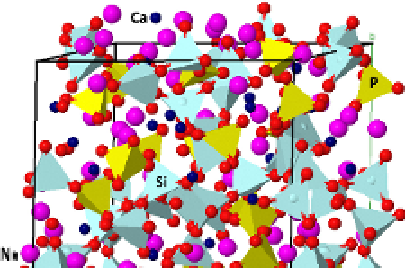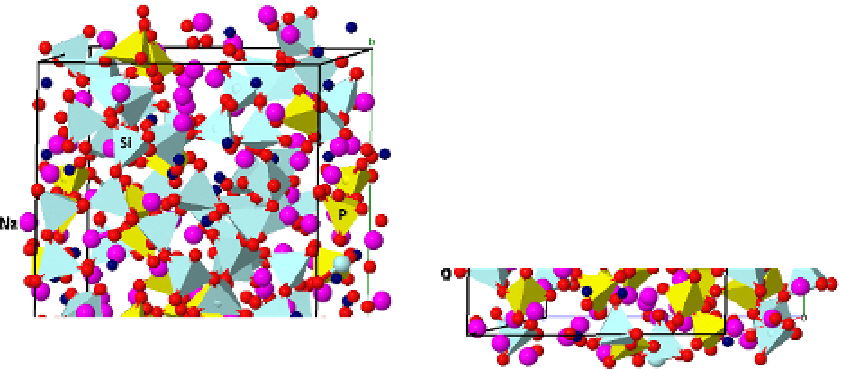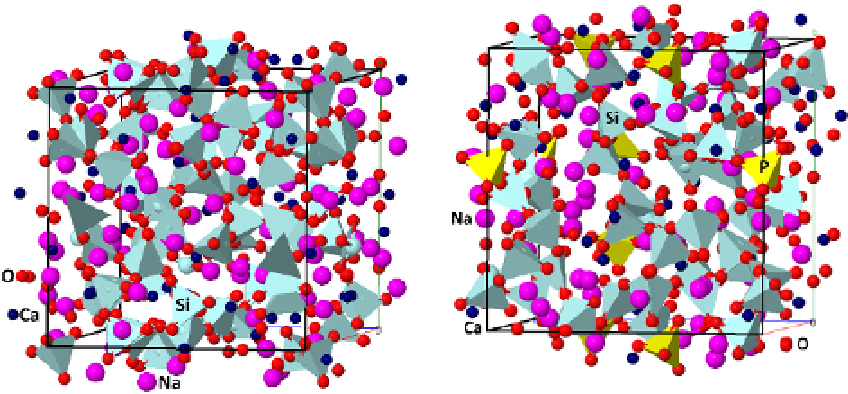Biomedical Engineering Reference
In-Depth Information
al., 2008b). Indeed, it is well known that structural and compositional features of bioactive
glasses are strongly connected to their bioactivity (Clayden et al., 2005; Lin et al., 2005). In
particular, it has been demonstrated (Tilocca, 2010) that in compositions less bioactive than
the 45S5 the majority of phosphate groups are linked to one or two silicon atoms.
Conversely, in bioactive glasses as the 45S5, almost all the phosphate groups are isolated
and mobile (Tilocca & Cormack, 2007).
b.
a.
c.
d.
Fig. 8. Best views of the optimized structures of the four studied glass models: a. no
phosphorous (P0); b. 2.5% phosphorous (P2.5); c. 5.5% phosphorous (P5.5) and d. 9.5%
phosphorous (P9.5). Colour coding: silicon light blue, oxygen red, sodium pink, calcium
dark blue and phosphorous yellow. Cell parameters drawn in red for
a
, in green for
b
and in
blue for
c
, while cell borders are in black (their values listed in Table 5).
In our research work, we have aimed to correlate the change in phosphorous content with
the change in structural and vibrational properties, these latter as a tool to detect the local





